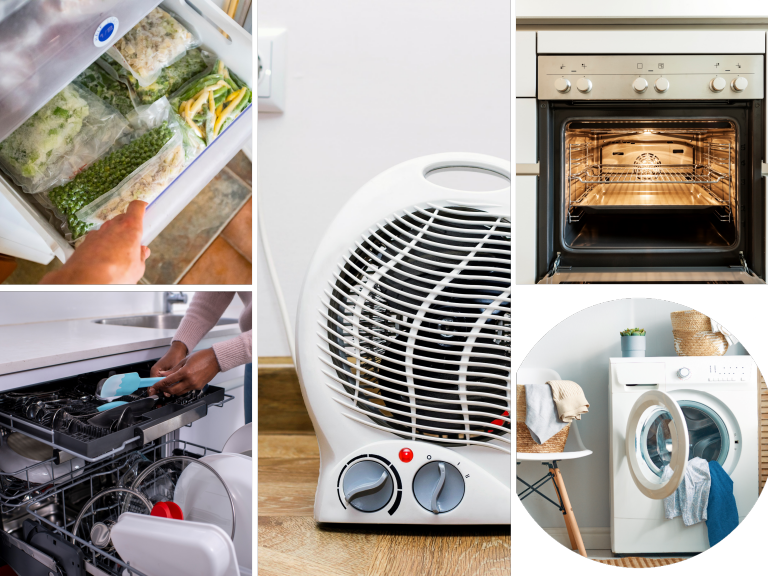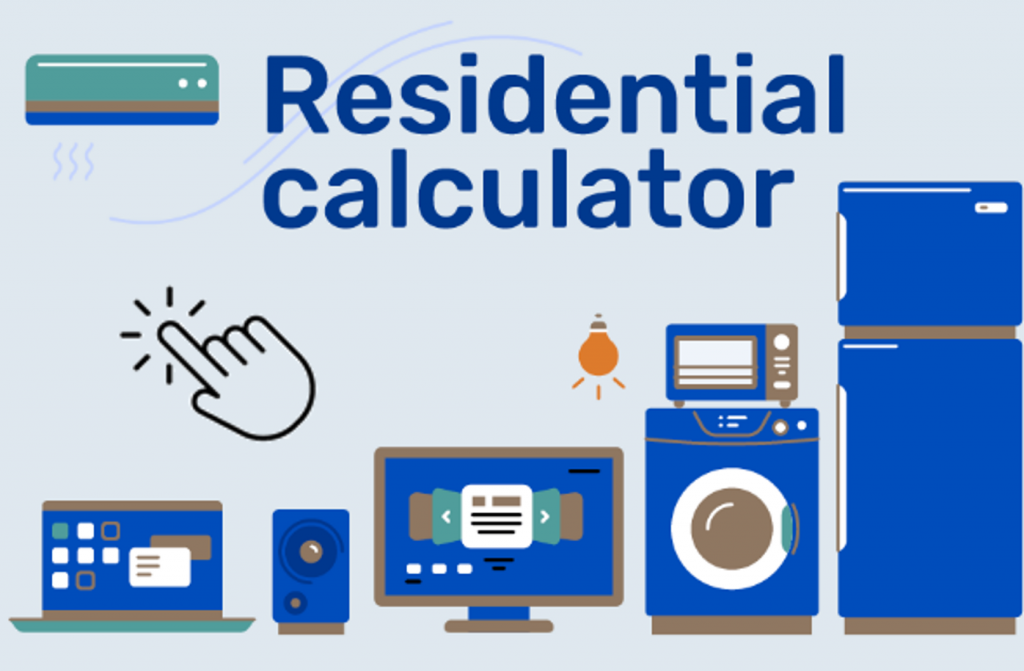
The Eskom residential calculator is the easy, free tool you can use to see where your household is using and potentially wasting electricity. The calculator takes you on a guided journey, through your home, and asks you to input your usage habits. The calculator will show you have much electricity you are using, how much your appliances are using, show you if your saving efforts are paying off.

Why should you try the residential calculator ?
- Save on your electricity bill.
- Compare your electricity usage month-to-month.
- Compare consumption of other households in your area. It helps to know if you are a low or a high user.
Click here to start calculating for your household!
For any suggestions contact us at [email protected]
The residential calculator Eskom has made available to South African electricity users is a tool created to educate consumers as to the consumption of the various appliances in the home. As users are in different contexts and environments, with different usage patterns it is essential that certain assumptions are made. For example, inlet water temperatures are different in each climate, so an assumed inlet water temperature is used. Geysers operate at different efficiencies and have different temperatures in different parts of the of the country, so tried and test benchmarks and averages are used to estimate the consumption of that is incurred when water is tapped out of a geyser.
When you use this calculator, be aware that benchmarks and past experience and research, done by Eskom and other utilities was used to estimate approximate consumption for appliances. This tool will not predict your bill accurately not will it give you the rand value that you will be charged by your supply authority. This calculator will however show you the high energy consumers in your home and will serve as an education tool to remind you how some appliances are quietly using power when you are not aware of it e.g., DS-TV decoder, cell phone on charge or television left on standby overnight.
Please approach this tool as a measure of your approximate usage and use it to guide behaviour change in your household, by showing family members what you estimate current usage to be, and what behaviour they can change to reduce your electricity costs over time. This tool gives you valuable saving tips and will give you a means to compare usage over many months, through many seasons and over multiple properties. Enjoy discovering your usage habits and make contact with the calculator team for any inputs or if you should experience any problems. E mail us at [email protected].
Tariffs
The calculator is calibrated to work on an assumed rand per kilowatt tariff of R2.40, which is the average tariff being charged by all municipalities in South Africa at the time August 2022. This will be adjusted yearly. You have the option of inputting your specific tariff you are being charged by your utility.
Days in the month
An average of 30.42 days per month has been used. Similarly, an average of 21.67 weekdays per month is used. Weekend days per month is averaged at 8.67. The weeks in the month is averaged at 4.33.

Household material assumption
Users are asked how many adults and children are in the home as an benchmark of hot water usage per adult and per child is made, eighty liters per day for adults and 70% of an adult usage per child.
It is assumed that the inlet water from the water supply company is at an average of 20 degrees Celsius when it enters your home. This is used to calculate the energy that is needed to further heat water to the temperature your geyser is set at.
Water usage in the shower is calculated to determine the amount of heated water used, as the geyser element would have used electricity to heat the water. A shower is estimated to use 8 liters per minute. Similarly, a bath is estimated to use 75 liters of water.
It is estimated that eight liters of hot water is used for every basin hand wash.
Older than 1994 – The water consumption of an older, top loaded washing machine, is assumed to be 40 liters per wash and a front-loaded washing machine at 27 liters.
Older than 1994 – More recent top loaded washing machines’ water consumption is estimated to use 51 liters per wash and a front-loaded washing machine at 56 liters per wash.
The average dishwasher uses 12 liters of water to wash a full load.
The kettle is estimated to hold 1,5 liters of water and it is assumed all of the contents is heated at each boil.
A refrigerator’s temperature is thermostatically controlled, the thermostat ensuring the fridge maintains a constant temperature by switching the fridge on and off all day. It is estimated the fridge uses electricity for 3 hours pers day. to keep it at the set temperature.
The average liters filtered per hour by a pool filter is estimated at 10 000 liters per hour.
Toggle Content
Municipalities use inclining block tariffs as a pricing signal to curb excessive usage, and to assist consumers to use their electricity wisely at the cheapest cost. This calculator does not take inclining block tariffs into account. Information on your utilities inclining tariffs can be obtained by visiting their websites or requesting their tariff materials from their customer services staff.
Details on Eskom’s tariffs can be found at https://www.eskom.co.za/distribution/wp-content/uploads/2022/04/Tariff-Booklet-final.pdf
A cell phone charging consumption is calculated on the number of chargers per week per household. If more than one cell is being charged, you are asked to increase the number of charges being made. Eskom has worked on the assumption that you charge your mobile phone one hour per day and that your charger is left on standby for the remaining 23 hours of the day. Eskom asks you how many charges you do per week, should you be charging more than one phone, you simply increase the number of charges you do per week in total, for all your household’s phones. Should you be using a super charger, your charging time will be less, but the consumption amounts to the same.
A two plate stoves and a four-plate hob consume the same amount of electricity per plate. Both a two plate and a four-plate calculation can be done, simply input the number of plates being used.
Energy savings can be effected by replacing an electric geyser with a solar or heat pump system. Many factors influence the exact savings that can be achieved by using these alternative technologies but, on average, you can expect a saving of approximately 60% of your water heating bill when changing to a solar system or a heat pump. If your solar system has an electrical element back up, the times you set it to come on to heat water, when you do not have sun, will reduce your savings. Contact an Eskom energy advisor to have these more detailed calculations done for you.
You can do more than one calculation for your home. Or you can do one for each of your properties e.g., holiday home, rented flat, parents home. To edit a calculation already done, go to the summary page and click on View history. Choose Edit on the calculation you would like to change. To submit a new calculation to your records, start a new calculation and input new data into the calculator and save, the calculator will save each new calculation on the date it was saved. All your calculations are shown on the summary page.

